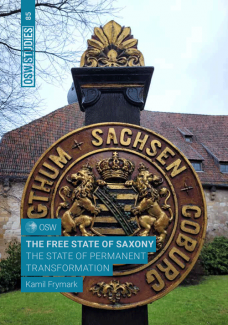The Free State of Saxony

Saxony is a unique federal state, boasting the strongest economy and the largest population among the states of the former GDR. Its distinctiveness lies primarily in its centuries-old tradition of statehood and independence, often shaped in opposition to Prussia. Saxons also stand out for their sense of agency, rooted in their participation in the struggle for freedom in 1989, when demonstrations in Saxon cities became the foundation of the peaceful revolution.
Since 1990, Saxony has been governed by the CDU; however, the erosion of conservative values promoted by the party has led to a surge in support for the AfD, an anti-immigrant party whose popularity in Saxony is among the highest in Germany. The state is undergoing continuous economic transformation, with its most recent phase being the planned phase-out of coal mining by 2038. The greatest challenges facing the government in Dresden include depopulation, labour shortages, and an ageing population. These issues will require innovative policies to ensure the state’s continued development and social stability.
Saxony, which borders Poland, is a key economic partner for Poland’s south-western voivodeships. The foundations of this cooperation are strengthened by a shared history, including the Polish presence in the region and the reign of Augustus II the Strong and Augustus III the Saxon on the Polish throne. In many cases, solutions implemented in Saxony can serve as a model for Poland. However, there are instances in which cooperation gives way to competition.





